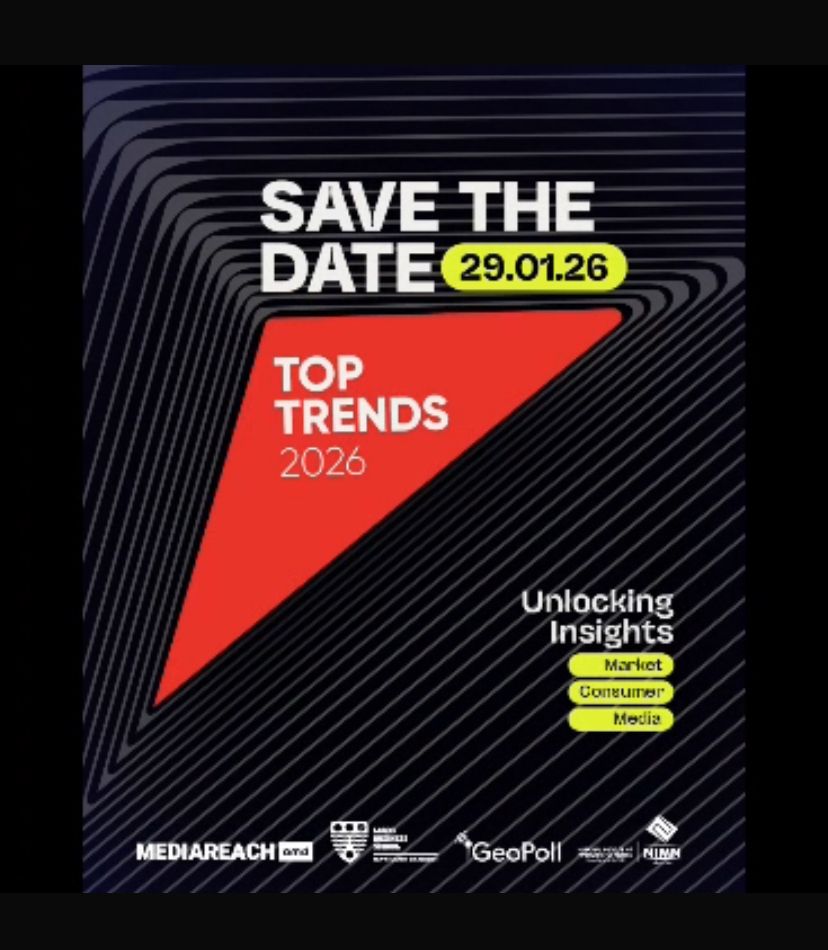New digital technologies are expected to take away many jobs. They will also create several new ones. However, to grasp these new opportunities, everyone must continuously learn new skills. “We will now have to move to a continuum of lifelong learning, which essentially means we have to be lifelong learners,” says Ravi Kumar, president at Infosys, the digital services firm.
Kumar sees two big shifts on the jobs front. The first, he says, will be from repetitive tasks to non-repetitive tasks. And the second will be from problem-solving to problem-finding. In a conversation with Knowledge@Wharton in the company’s New York City offices, Kumar discusses how the emerging world of technology will shape the jobs of the future and what it means for individuals, industries and countries.
An edited transcript of the conversation follows.
_______________________________________________________
Knowledge@Wharton: At a recent conference, you said that 75 million old jobs will go away by 2022, and 135 million new jobs will be created because of new technologies. How will the jobs of the future be different from the jobs that are being eliminated? What are the main factors driving this change?
Ravi Kumar: Every large enterprise and every large government ecosystem is thinking about this – about automation, AI, machine learning and new age digital technologies taking away jobs of the past and creating jobs for the future. That has happened in most tech revolutions of the past. But the sheer scale and accelerated pace of this, sets it apart. It’s a tectonic shift in the way businesses and operating models have evolved in the last few years.
I think there will be two big shifts. First, a lot of repetitive tasks at the workplace will be automated with machines and AI. When that happens, humans will do the cognitive, non-repetitive tasks. Humans have to start looking at using machines as a way to amplify their own abilities. This shift from repetitive to non-repetitive tasks is a big one.
Second — and this fascinates me – institutions and enterprises will move from a people-only workplace to a people-plus-machine workplace. If I extend that thought, they will move to people-plus-gig-plus-machines. Machines will do the problem solving. The gig economy will bring variability and agility to our workforce, along with scale. And the private human capital we now have – scaled with public human capital made accessible to us in the gig economy — will switch to the creative job of problem-finding. So, one shift will be from repetitive tasks to non-repetitive tasks. And the second shift will be from problem-solving to problem-finding. Human beings will transition to creative jobs.
Knowledge@Wharton: What are some of the opportunities and challenges in implementing this vision that you just described?
Kumar: The fundamental shift that must be made is to lifelong learning. All of us — when we were growing up — made a linear progression from learning at schools to working. We will now have to move to a continuum of lifelong learning, which means we have to be lifelong learners. You have to learn to learn, learn to unlearn, and learn to re-learn. For an individual to imbibe that culture of being on that learning curve for a lifetime is a big switch.
The second aspect is about nurturing curiosity and learning problem-finding. The lines between industries are being blurred and therefore one has to start thinking in a more diverse and cross-functional way. In fact, even when it comes to gaining expertise in a particular discipline, just that alone won’t work anymore. In the digital age, applying technologies to businesses will be a more valued virtue than learning the technology itself. On one side of the spectrum, we need deep programmers. On the other side, we need individuals who can contextualize that skill to a specific business and apply it meaningfully, which means we need people who can find problems, and then apply technology to solve those problems across businesses. That means one needs a much more diverse workforce coming from liberal arts, coming from design, coming from humanities, coming from anthropology and disciplines of almost every kind. That’s a big shift from the previous era where the tech revolution embraced only technologists. In fact, technologists, seem to have created the ‘digital divide.’ We have the opportunity to bridge that divide today.
Knowledge@Wharton: Which industries do you think are best prepared for this shift? And which countries are best prepared for these changes in the future of work and jobs?
Kumar: Industries with a legacy of adopting core technologies or traditional technologies often find it much more difficult to repurpose themselves for the digital future. This is because they have their legacy to deal with. An industry that did not deeply adopt traditional technologies can now leapfrog and get ahead of the curve.
Another way of seeing this is that industry lines are blurring. Every time I meet CXOs from across enterprises, I see they are not worried about peers from their own industry. It’s what other industries are doing that gives them sleepless nights, because they don’t know which other industry will spawn their next competition. If I meet a CXO of a bank, most times I hear, “Tell us what you are doing with retail clients. We want to know about them.” It’s the same with other industries.
Regarding countries, emerging economies like India and China — which were far slower than their Western counterparts in traditional technology adoption — are leapfrogging and creating digital platforms that are distinctly superior. It’s easier for them because they do not have as many legacy systems and legacy processes to deal with. The Western world, in contrast, must tackle the challenge of repurposing legacy capital and legacy skills for their digital future. Emerging economies, on the other hand, can leapfrog into a completely new digital paradigm without having to bear the baggage of legacy.
An intriguing question is who’ll win the race? For instance, China, traditionally has provided labor arbitrage to create massive manufacturing ecosystems. Today, advancing technology has brought us to an inflection point where automation can take away that leverage of labor arbitrage. Human labor on the manufacturing shop floor is clearly on the decline. This could well make developed nations, which now find little labor advantage in the developing world, bring their manufacturing back home. This is a complicated paradox for economies to deal with.
Knowledge@Wharton: Do you see the model that you described earlier of people plus machines plus gig economy playing out in China? And how is it different from the way it plays out, say, in a place like the U.S.?
Kumar: If you look at the density of robots on a shop floor, China doesn’t rank number one. Korea ranks higher. So does Taiwan.
Knowledge@Wharton: You mean in the manufacturing space?
Kumar: Yes, in the manufacturing space. Germany is doing pretty well. In fact, a lot of manufacturing is going back home [to the developed countries]. So China really has to rethink their game plan. This just brings home the lesson that being an incumbent is not necessarily a competitive advantage in an era where every day brings with it the opportunity to imagine and build a completely new operating model.
Knowledge@Wharton: As you look to the future of work in a sector like banking and financial services, what kinds of jobs do you think are likely to go away, and what kinds of new jobs will come into being as a result of these technology shifts?
Kumar: The traditional way of banking – going to a bank to complete a transaction — has all but vanished as banks now come to us (on an app) so we might get our work done. This is true in almost every country in the world. In fact, in the emerging markets, financial transactions – both in volume and scope – are executed digitally to a greater extent than in the developed nations. This has taken the whole banking revolution into a new orbit. In underdeveloped nations, the unbanked population — a significant segment — accesses banking services through the mobile phone. Nearly all of Africa, for example, banks on the mobile phone and mobile service providers are emerging as the ‘new bankers.’ Clearly, the lines between industries are blurring, which means practically any entity with imagination and initiative has a chance to be the bank of the future in these nations.
Knowledge@Wharton: How will jobs of the future need to balance between technical skills on the one hand and emotional and social skills on the other? What are some of the implications for blue-collar and white-collar work?
Kumar: That’s a fascinating question. Yes, technologies of the future are going to change the paradigm of workforces and workplaces and we will need deep programming skills to build these technologies. And yet that alone will not be enough. I think the skills that will be valued even more are the abilities we must develop to find the pressing problems of business and society and then find ways to apply these technologies to solve those problems. This will need an emotional quotient and an empathy quotient to use technology to make our lives better. Finally, that’s what technology is all about. It has to make lives better.
And for that to happen, my sense is that we will have to move from having only deep programming skills and nurturing only STEM talent to bringing to the mix skills from liberal arts, design, humanities and other backgrounds that are completely removed from the world of STEM. This did not happen before when the first waves of the technology revolution hit us. It is happening in the digital age, when diverse technologies are being embraced across industries. Now the emotional and the human aspect of technology will shine through.
I also believe that we are going to shift from nurturing T skills to developing Z skills. T skills means specializing in one area of expertise, along with a broad embrace of other disciplines. This is typically advocated by our educational ecosystems. But we are going to have to move to building Z skills, which means one learns, unlearns and re-learns continuously. I call it the “anti-disciplinary” approach to education because there isn’t any one discipline that one is required to master. So, in this construct, the technology is important, but a bigger virtue is the ability to apply it in a human and empathetic way to solve a business problem. That’s the future.
Knowledge@Wharton: As you think about the future of work, what are some of the biggest risks that keep you up at night? What do you hear from the people you talk to in different companies and different industries? What are they most worried about? What can be done about those risks?
Kumar: Across the world, everybody now recognizes that reskilling is very important. Repurposing talent is very important. But everybody is talking about reskilling for white-collar jobs. What happens to those working blue-collar jobs? What happens to the factory worker? The technician? The bartender? In the past, there was this distinctive difference between blue- and white-collar jobs, and the clearly different skills these jobs demanded. But the embrace of digital is so overarching and so pervasive today that we need to start thinking about reskilling for these blue-collar jobs as well. That line between white-collar and blue-collar jobs is blurring, creating ‘new-collar jobs.’ Very little reskilling infrastructure has been established for blue-collar jobs or jobs in the future. That’s a big risk and an uphill task, because so many of our people are not reskilled and not ready for the future. In fact, our own initiative in community colleges is a phenomenal example of how we are trying to remedy that.
The second aspect, of this reskilling is: Who owns it? Is it the employee or the enterprise, the government or the academic institutions? Governments are wired to invest in the first 15 to 20 years of citizens’ lives, and then once again in the last 20 years of citizens’ lives. But all the change happens in the middle. All the reskilling is needed in the middle. So how do governments re-architect their own infrastructure to deal with the middle? And how do educational ecosystems gear up to create lifelong learners? These are the things I would lose sleep on.
Knowledge@Wharton: What is Infosys doing to try to mitigate some of these risks?
Kumar: In our own small way, we are making an impact on all of these three areas. We have a learning platform called Wingspan that helps enterprises curate learning for their employees – including blue-collar workers. In fact, we leverage Wingspan for the learning transformation of our own employees.
We are also very actively pursuing collaboratively working with governments. Our hiring from schools in the U.S., for our six digital centers, is in partnership with state governments and local academic institutions to create net new future talent, which doesn’t already exist in the market.
When it comes to creating lifelong learners, we have the Infosys Foundation in the U.S. This is among the top three foundations for computer science education in K-12 schools. Our endeavor is to teach teachers so that they are, in turn, equipped to teach students. We also teach students of course. And we are doing this on a massive scale.
Knowledge@Wharton: What advice would you give to young people who are just about to enter the workforce? What can they do today so that they can have a meaningful career over the next 30 to 40 years?
Kumar: Being a lifelong learner is probably the most valued attribute in these times of digital. At present, you complete your higher education, you start on a job, and you think you are done with learning. I think you need to change that in favor of nurturing the mindset of being a lifelong learner, because what you learn today will become obsolete in a few months or a year. And yet, you should be prepared to continue to grow on your career path. The only way to do this is to be on this constant learning journey. If you want to stay relevant, you have to be on top of all that’s new around you, all the change around you, and act accordingly.









